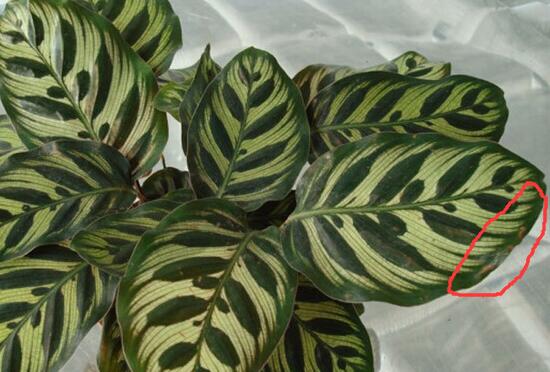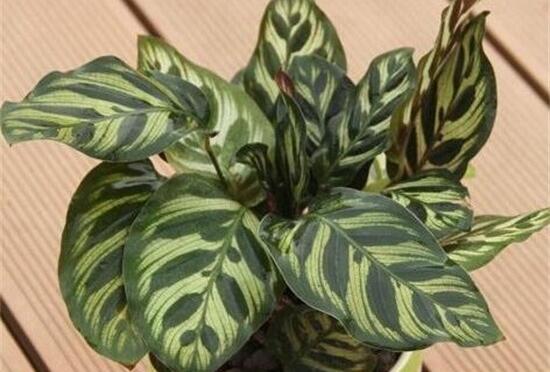How to raise Wenshu orchid, the breeding methods and precautions / sufficient light of Wenshu orchid
Wenshu orchid is a kind of flower plant native to Indonesia, which is highly ornamental, and there are many people who raise it in our country. However, if you want to raise it well, there are many things you need to pay attention to, so how to raise Manjusri? What are the breeding methods and matters needing attention of Wenshulan?
First, how to raise Wenshu orchids and understand their habits

If you want to know how to raise Wenshu orchid, first of all, we need to understand its growth habits. It likes to grow in a warm and moist environment and likes light, so we should keep enough light when we breed. In addition, watering, fertilization and other aspects are also very particular. The details are below, let's take a look at them.
II. Culture methods and matters needing attention of Wenshu orchid
1. The soil is high in humus.
Wenshu orchid this plant is relatively strong adaptability, so there is no particularly strict requirements for the soil, generally choose a more loose and fertile, better drainage soil on it. If it is a potted plant, we can choose the soil with high humus content, which will be more helpful to its growth.
two。 Fertilizer, once every 7-10 days during the growing period
Fertilizer is one of the main nutrients in the growth process of Wenshu orchid, especially after entering the growing period, the demand for fertilizer is very high, basically every 7-10 days. When fertilizing it, we should keep the principle of applying thin fertilizer frequently, and remember not to apply thick fertilizer, otherwise it is easy to burn the plant.
3. Moisture, dry and wet.
In the growth process of Wenshu orchid, its demand for water is very high, especially in hot summer, basically need an appropriate amount of watering every day, so as not to cause plant withering and yellowing. In spring and autumn, we can choose to water once every 2 days, and in winter, we can choose to water once every 2 weeks.
4. Light, shade in summer
Wenshu orchids prefer light, but are not very resistant to strong light. If the light is more suitable in spring and autumn, we can keep it outside to receive light all day, and when the light is strong in summer, we need to shade it. We can let it receive light in the morning, and when the light is strong at noon, it is best to move to indoor semi-shade for breeding.
5. Pruning tiller buds to maintain plant type
In the peak growing season of Wenshu orchid, it always grows some tillering buds around its rhizome, which not only affects the ornamental of the plant, but also affects the growth of the plant, so that we need to prune the tiller bud in time, so that the plant can keep the plant type upright and the rhizome neat.
6. Prevention and control of diseases and insect pests should be timely.
In the process of cultivating Wenshu orchids, if we are not careful enough, it is easy to let diseases and insect pests and other problems take advantage of the situation. This kind of problems pose a great threat to plants, so we must deal with them in time when we find them. For specific treatment methods, you can refer to Wenshulan's pest control article, which has a detailed introduction.
Culture methods and matters needing attention of Wenshu orchid
Manjushri orchids have beautiful leaves and high ornamental value. Manjusri orchid scape erect stout, white flowers smell fragrant, can be placed in solemn conference halls, magnificent hotels and other places, elegant and generous, pleasing to the eye. Then how to breed Wenshulan? Next, let's take a look at the culture methods and points for attention of Wenshu orchid.
1. Culture methods of Wenshu orchid
1. Soil: Manjusri does not have strict requirements on soil, is resistant to salt and alkali, and grows better in soils rich in humus, loose and fertile, and good drainage.
2. Watering: Wenshu orchid needs sufficient moisture in the growing season, often keep the soil moist, but not waterlogged, and reduce watering after autumn.
3. Sunshine: in order to make the leaves green, beautiful and tidy without affecting the light, Wenshu orchid should be properly shaded in the heat and heat of summer, from 7 am to 12:00, full sunshine should be accepted, and a shade should be built from 12:00 to 15:00.
4. Temperature: Wenshulan prefers warmth and is not resistant to cold. The suitable temperature for growth is 15 ℃ 20 ℃. In winter, it is necessary to spend the winter in an indoor space of not less than 5 min.
5. Fertilization: Manjusri likes fertilizer, so manure should be applied 3 times a month, and phosphate fertilizer should be added 2 times before and after flowering, which is beneficial to more flowering and long flowering period.
6. Pruning: after flowering, the pedicel of Wenshu orchid that leaves no seed should be cut off, and the leaves of old yellow should be removed at the same time.
7. Propagation method: Manjusri can be divided or cut, and its propagation is about from spring to autumn. The suitable growth temperature is 22 Mel 28 degrees Celsius, generally more than 10 degrees Celsius should be treated with anti-freezing.
II. Matters needing attention in the culture of Wenshu orchid
1. Cooling and humidification in summer. Wenshulan is afraid of hot sun exposure in summer, so after entering summer, the plant should be moved to the shade shed or north balcony for maintenance, and often sprinkle water to the ground to create a cool and humid environment.
2. Fertilizing frequently during the growing period. Thin fertilizer should be applied frequently during the growing period. The thin fertilizer was applied mainly by nitrogen fertilizer in spring, the liquid fertilizer mainly by phosphorus and potassium fertilizer in bud stage, and the rotten cake fertilizer in autumn. The interval of fertilization is 2 weeks.
3. Watering frequently during the growing period. Water is watered every 2 days in spring, once every evening in summer, and reduced in autumn. Watering is strictly controlled in winter (usually watering once every 2 weeks).
4. do a good job of keeping warm in winter. The plants were moved indoors in the northern region in early October and placed in the sunny place in the southern region in early November, and the winter could be overwintered by keeping the temperature between 8 ℃ and 10 min.
The above are the culture methods and precautions of Wenshu orchid. Wenshu orchid can blossom all the year round in an environment with suitable temperature and humidity. I hope the culture method shared by Xiaoqi will be helpful to everyone.
Recommended reading:
Culture methods and matters needing attention of ① Grass
Culture methods and matters needing attention of ② pineapple
Culture methods and matters needing attention of ③ bluebells
Culture methods and matters needing attention of ④ hollyhock
Planting methods and matters needing attention of ⑤ Petunia
Culture methods and matters needing attention of Carthamus tinctorius
Safflower Wenshu orchid terminal umbel, each inflorescence has more than 20 florets, flower shape is not very regular, sa is good-looking. Then how to raise safflower Wenshu orchid? Next, let's take a look at the culture methods and matters needing attention of Safflower Magnolia.
I. Culture methods and matters needing attention of Carthamus tinctorius
1. Soil: Carthamus tinctorius requires acidic soil rich in humus, and its roots often rot in clayey soil. The culture soil mixed with 3 parts of peat soil and 2 parts of sandy soil can be selected for planting.
2. Light: Carthamus tinctorius is more shade-resistant, the high temperature in summer should be moved to the outdoor Arbor for maintenance, grow best in the astigmatism environment, and move to the sunny place indoors in the middle of September.
3. Temperature: Carthamus tinctorius likes to be warm, the suitable temperature is 15 ℃ to 25 ℃, shade should be paid attention to in summer, and the ambient temperature should not exceed 25 ℃. In winter, watering should be reduced, fertilization should be stopped, and greenhouse temperature should be kept at no less than 10 ℃.
4. Watering: Carthamus tinctorius needs sufficient water during the growing period, and the basin soil should be watered in time after the basin soil is dry, otherwise the leaves are easy to lodge and affect the growth. It is necessary to make the dry soil wet and do not make the basin stagnant water. Watering should be controlled in winter, but usually water must be sprayed on the leaves of the plant to maintain high air humidity.
5. Fertilization: Carthamus tinctorius should be fertilized frequently during the whole growing season from spring to winter. It is common to pour rotten liquid fertilizer or prepared nutrient solution every 10 to 15 days. Topdressing should be carried out when the basin soil is dry, and improper fertilization will cause the fleshy root to rot.
6. Pruning: when new leaves grow in Carthamus tinctorius every year, the outermost old leaves should be removed and the yellow leaves should be cut off at any time. The pedicel should be cut off in time after flowering to keep the plant shape beautiful.
7. Insect pests: Carthamus tinctorius is easy to be harmed by woolly scale during its growing period, accompanied by soot disease. A small amount of it can be washed with clean water, and a large amount of 1000 times mixture of omethoate emulsion and dichlorvos emulsion is sprayed to prevent and control. And rinse soot with clean water.
The above is the introduction of safflower Wenshu orchid culture methods and matters needing attention. I hope it will be helpful for everyone to cultivate safflower Manjusri, and cultivate a luxuriant safflower Wenshu orchid.
- Prev

How to do the scorched edge of peacock bamboo taro leaves, 3 reasons and remedies / humidity should not be low
Peacock taro, named for the peacock feather pattern on the leaves, is a world-famous foliage plant, often placed indoors by flower friends. However, in indoor breeding, due to various reasons, there will be peacock taro leaves yellow, scorched edge situation, then peacock bamboo taro leaf scorched edge how to do? To this
- Next

How to do the peacock bamboo taro leaf curl, adjust the temperature to increase humidity / watering to the right amount
For peacock taro, friends who have seen it should be impressed. Its leaves are not only evergreen all the year round, but also have a peacock feather pattern on it, which is really very strange. Because of the ornamental value of peacock taro, many people will keep it at home, but the leaves of peacock taro leaves are curled. How is this going on?
Related
- Fuxing push coffee new agricultural production and marketing class: lack of small-scale processing plants
- Jujube rice field leisure farm deep ploughing Yilan for five years to create a space for organic food and play
- Nongyu Farm-A trial of organic papaya for brave women with advanced technology
- Four points for attention in the prevention and control of diseases and insect pests of edible fungi
- How to add nutrient solution to Edible Fungi
- Is there any good way to control edible fungus mites?
- Open Inoculation Technology of Edible Fungi
- Is there any clever way to use fertilizer for edible fungus in winter?
- What agents are used to kill the pathogens of edible fungi in the mushroom shed?
- Rapid drying of Edible Fungi

